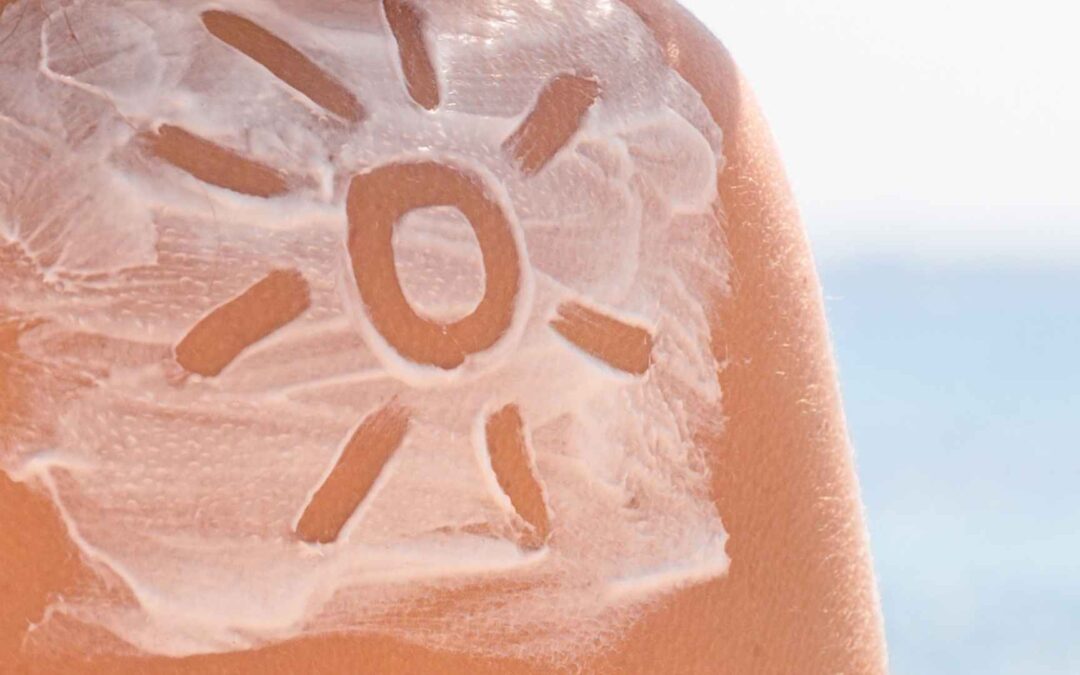We’ve been going over and over about hyperpigmentation. But did you know that sun damage is one of the leading causes of hyperpigmentation? Let’s read more about it.
The ultraviolet radiation from the sun plays a significant role in causing and worsening the condition. Hence, in this battle against hyperpigmentation, photoprotection is a very important weapon.
In our tech-savvy era, staying connected often means extended screen time. This leads to exposing our skin to the damaging effects of blue light emitted by digital devices.
Let’s understand how photoprotection helps in combating hyperpigmentation and why you need to protect yourself from blue light.
SUN EXPOSURE AND HYPERPIGMENTATION
It is necessary to understand the link between sun exposure and hyperpigmentation. When the skin is exposed to the sun, it stimulates the production of melanin as a natural defense against UV radiation. When skin is exposed to the sun for a longer time, it disrupts the balance of melanin production. This causes dark spots to appear and unevenly pigmented skin tone. Individuals with a darker skin tone are particularly more prone to it. Hence protecting your skin is very important in managing hyperpigmentation.
Studies suggest that blue light too can stimulate the melanocytes. This increases melanin production and exacerbates the pigmentation.
THE ROLE OF PHOTOPROTECTION
The term photoprotection basically means the measures we take to protect our skin from sun damage. This includes a combination of physical and chemical barriers that minimize UV penetration. It plays a big role in protecting our skin from harmful UV radiation and preventing further damage. This helps the skin to heal and stay healthy.
Let’s explore and understand how it works.
SUNSCREEN
Apply a broad-spectrum sunscreen. Make sure you choose a sunscreen with a high sun protection factor (SPF). Look for a sunscreen that gives protection against both UVA and UVB rays. Sunscreen acts as a physical barrier that reflects and absorbs the UV rays. Apply it generously and apply it 15-30 minutes before exposure to the sun. Reapply every 2-3 hours. Let’s take a look at the types of sunscreens.
1. PHYSICAL SUNSCREENS
They are also known as mineral sunscreens. They create physical barriers on the skin which deflect the UV radiation. Physical sunscreens usually contain physical filters like iron oxide as a blue light filter, and titanium dioxide and/or zinc oxide as broad-spectrum photo protectants. They are gentle and less likely to cause irritation.
2. CHEMICAL SUNSCREENS
These sunscreens absorb UV radiation and convert it into heat. The heat is then released from the skin. They typically contain ingredients like avobenzone, oxybenzone, octinoxate, and homosalate.
3. HYBRID/COMBINATION SUNSCREENS
Hybrid sunscreens are a combination of physical and chemical sunscreens. They combine the UV reflecting and the UV absorbing properties.
SUN-PROTECTIVE CLOTHING
Wearing clothing like long-sleeved shirts, wide-brimmed hats, and sunglasses protect your skin against sun damage. These type of clothing items shields your skin from direct sunlight and reduce the risk of hyperpigmentation. It provides additional defense against UV radiation.
SEEK SHADE
Seek shade whenever you can! The peak hours normally range from 10 am to 4 pm. Limiting direct exposure to the sun during these peak hours is important to prevent hyperpigmentation. Seek shade under trees, buildings, or use an umbrella.
SKINCARE PRODUCTS
Use skincare products that have ingredients that are known for their photoprotective and depigmenting properties. They not only reduce hyperpigmentation and dark spots but also shield from UV rays and environmental stressors. Some of these ingredients include – vitamin C, niacinamide, alpha hydroxy acids, retinoids, kojic acid, peptides, glycolic acid, licorice root extract, etc.
REGULAR SKIN EXAMINATIONS
A regular examination is another better option to get your skin checked for any uneven pigmentation. If you notice any appearance of new spots, it’s best to get them checked by a dermatologist. Early detection and treatment can avoid any further hyperpigmentation.
PRESCRIPTION TOPICAL TREATMENTS
In some cases of hyperpigmentation, the dermatologist can recommend using topical treatments like retinoids or azelaic acid to reduce the pigmentation. These ingredients promote cell turnover and reduce the appearance of dark spots. In addition to these, it is important to use photoprotection for the best results.
BENEFITS OF PHOTOPROTECTION
PREVENTS SKIN DARKENING
Photoprotection methods like applying sunscreen prevent UV radiation from triggering the production of melanin. This prevents the formation of new dark spots or darkening of the existing hyperpigmented areas.
ENHANCES TREATMENT RESULTS
Photoprotection is important for individuals undergoing skin treatments like laser therapy and chemical peels. Protecting the skin from sun damage helps the existing treatment to work better and gives better results.
REDUCES THE RISK OF RECURRENCE OF MELASMA
Melasma is a chronic skin condition that often requires long-term treatment. Sun exposure is one of the major factors that can trigger or worsen the condition. Consistency in photoprotection goes a long way in helping with the treatments.
Your skin is a treasure, make sure you keep it healthy. Adopt sun protective measures and minimize the risk of sun-induced hyperpigmentation. Though hyperpigmentation treatments are available, prevention is always the best option to go with. Incorporate photoprotection into your skincare routine and have radiant skin!

